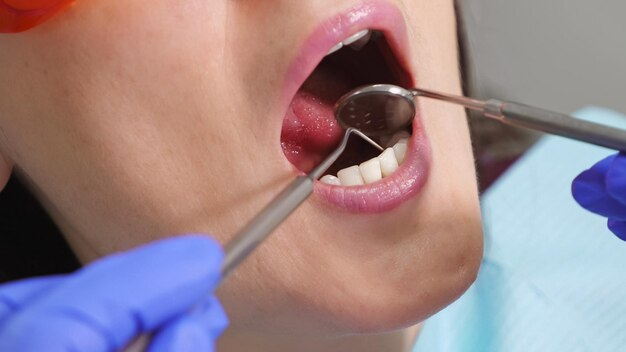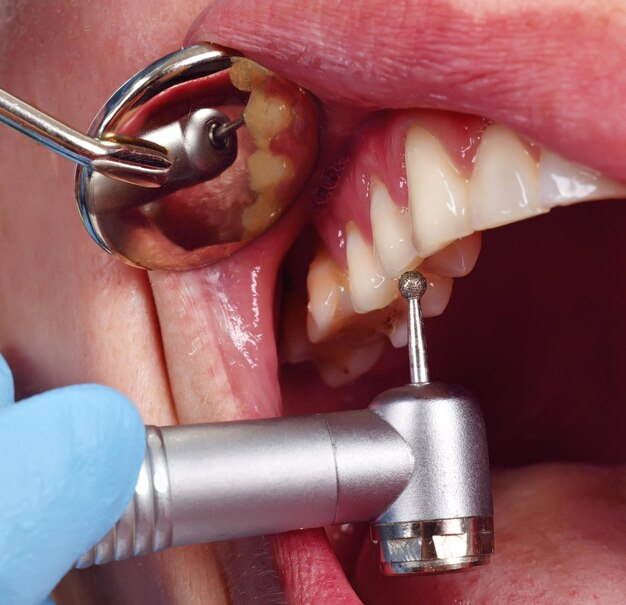How Long Does It Take to Heal After Gingivectomy Surgery?
Gingivectomy surgery is a dental procedure performed to remove or reshape the gum tissue around the teeth. This procedure is often recommended for patients suffering from gum disease or those seeking cosmetic improvements. It can help alleviate symptoms of gum overgrowth, improve oral hygiene, and promote better overall gum health. The healing process after Gingivectomy Surgery in Dubai, however, can vary from person to person depending on several factors, including the extent of the surgery, the patient’s health, and how well the post-surgical care is followed.
Healing time after gingivectomy surgery is an essential consideration for anyone undergoing the procedure. While the recovery process may seem daunting, understanding what to expect can help alleviate concerns and promote faster healing. In this article, we will explore the recovery timeline after gingivectomy surgery, the factors that affect healing time, and what steps you can take to ensure a smooth recovery.
What Is Gingivectomy Surgery?
Gingivectomy surgery is a dental procedure aimed at removing or reshaping excess or unhealthy gum tissue. The surgery can be performed for various reasons, including treating periodontal disease, reducing gum pockets that trap food and bacteria, or addressing gum overgrowth caused by certain medications. It can also be used for cosmetic purposes to improve the appearance of the gums, particularly if the patient has a "gummy smile" where the gums cover a significant portion of the teeth.

During the procedure, the dentist or periodontist will use a scalpel or laser to carefully remove the necessary gum tissue. In cases where the gum disease has caused severe damage to the gums, the procedure may involve trimming the tissue to reduce inflammation and restore the gum line. After the surgery, the gums will be reshaped to promote better oral hygiene and a more balanced smile.
Gingivectomy surgery is typically performed under local anesthesia, meaning patients are awake but the treated area is numbed to prevent discomfort. The procedure usually takes less than an hour, depending on the number of areas being treated.
How Long Does Healing Take After Gingivectomy Surgery?
The healing time after gingivectomy surgery can vary based on several factors. Generally, it takes about one to two weeks for the majority of the healing to occur. However, the complete recovery process may take several weeks to a few months, depending on the extent of the surgery, how well the patient follows post-surgical instructions, and individual health factors.
Immediate Post-Surgery Recovery
Immediately following gingivectomy surgery, patients may experience some discomfort, swelling, and bleeding. These symptoms are a normal part of the healing process and usually subside within a few days. The first 24 to 48 hours after surgery are the most critical for recovery. During this time, patients should rest and avoid any activities that could disturb the treated area.
Swelling is common after the procedure and may peak within the first two days. Ice packs can be used to reduce swelling and help with pain management. Mild bleeding can also occur, but this should gradually stop as the gums begin to heal. Most of the discomfort experienced right after surgery can be managed with over-the-counter pain relievers as directed by the dentist.
Week 1: Initial Healing
During the first week of recovery, the majority of the immediate swelling and discomfort should begin to subside. The gum tissue will start to heal over the next several days, although it may still be sensitive. By the end of the first week, the gums will begin to firm up and the bleeding should be minimal or completely stopped.

However, it is important for patients to avoid touching or irritating the treated gums during this time, as this can disrupt the healing process.It is also recommended that patients avoid consuming hard, hot, or spicy foods during the first week of recovery. Soft, cool foods are usually easier to eat and less likely to irritate the gums. Brushing should be done gently, and flossing may need to be avoided in the surgical area to prevent injury to the healing tissue.
Week 2: Continued Healing
By the second week, the gums will continue to heal and should feel less tender. Swelling and discomfort should be minimal at this stage, although some residual sensitivity may persist, particularly when brushing or chewing. During this time, the gums will continue to reshape and reattach to the teeth. Any stitches placed during the procedure may dissolve or need to be removed by the dentist during a follow-up appointment.
At this point, patients can begin resuming more normal activities, although care should still be taken not to put unnecessary pressure on the gums. The tissues in the treated area should be more stable, but it’s important to continue following the post-operative care instructions to avoid complications.
Week 3 to Week 6: Complete Tissue Reattachment
Between three to six weeks after surgery, the gums should have healed significantly. Any discomfort or swelling will typically be minimal by this point, and patients can resume normal oral hygiene routines. The gum tissue should now be securely reattached to the teeth, and the contouring of the gums should be well-established.
However, it is still important to avoid any vigorous physical activity or trauma to the area, as the gums can remain sensitive for a few more weeks. Follow-up visits with the dentist or periodontist will ensure that the gums are healing properly and that the surgical site is free of infection.
Full Healing: Up to Several Months
While the initial healing process may take only a few weeks, full recovery after gingivectomy surgery can take several months. During this time, the gums will continue to settle into their new shape and fully heal. The underlying bone and tissue may take longer to fully regenerate, and the gums will continue to adjust to the contours created during the surgery.
It is important to follow all care instructions during this period, including maintaining proper oral hygiene and attending follow-up appointments. Your dentist or periodontist may recommend additional treatments, such as periodontal maintenance or cleanings, to ensure that the gums continue to heal properly and remain healthy.
Factors Affecting Healing Time
Several factors can influence the speed and effectiveness of healing after gingivectomy surgery. These include:
1. Severity of the Surgery
The extent of the gum tissue removal or reshaping can affect how long it takes to heal. More extensive surgeries involving multiple areas or deep tissue removal may require a longer recovery period compared to minor cosmetic reshaping of the gum line.
2. Oral Hygiene
Proper oral hygiene is crucial for preventing infections and promoting faster healing. Gently brushing your teeth and gums after surgery (as directed by your dentist) can help maintain cleanliness and prevent complications. Avoiding vigorous brushing or flossing in the treated area is essential to avoid irritating the gums.
3. Patient Health
Overall health and any existing medical conditions can also affect healing time. Patients with conditions like diabetes or those who smoke may experience slower healing due to reduced blood flow or immune function. It's important to discuss any pre-existing conditions with your dentist or periodontist before the procedure to ensure the best possible outcome.
4. Following Post-Operative Instructions
Following post-surgery care instructions is essential for a smooth recovery. This may include recommendations on diet, pain management, oral hygiene, and activities to avoid. Neglecting these instructions can lead to complications such as infection, delayed healing, or the need for additional treatments.

Signs of Complications to Watch For
While healing from gingivectomy surgery is typically straightforward, there are some signs of complications that patients should be aware of. These include:
- Persistent bleeding after the first few days
- Severe pain or discomfort not relieved by over-the-counter painkillers
- Excessive swelling that does not subside
- Signs of infection, such as fever or pus discharge
- Unusual gum color or texture that doesn't improve over time
If any of these symptoms occur, it's essential to contact your dentist or periodontist promptly to avoid further complications.
Conclusion
Healing after gingivectomy surgery is a gradual process, but with proper care, most patients can expect a smooth recovery. The initial healing phase typically takes one to two weeks, with full recovery taking several months. The success of the recovery process depends on factors such as the extent of the surgery, overall health, and adherence to post-operative care instructions.
Following your dentist's or periodontist's advice closely will ensure that your gums heal properly, and you achieve the desired results from your surgery.If you are considering gingivectomy surgery, it's important to have realistic expectations about the recovery timeline and to be patient during the healing process. By taking care of your gums and maintaining proper oral hygiene, you can enjoy the benefits of healthier gums and an improved smile in the weeks and months to come.
If you want to read more:
What is Gingivectomy: Overview, Benefits, and Expected Results
